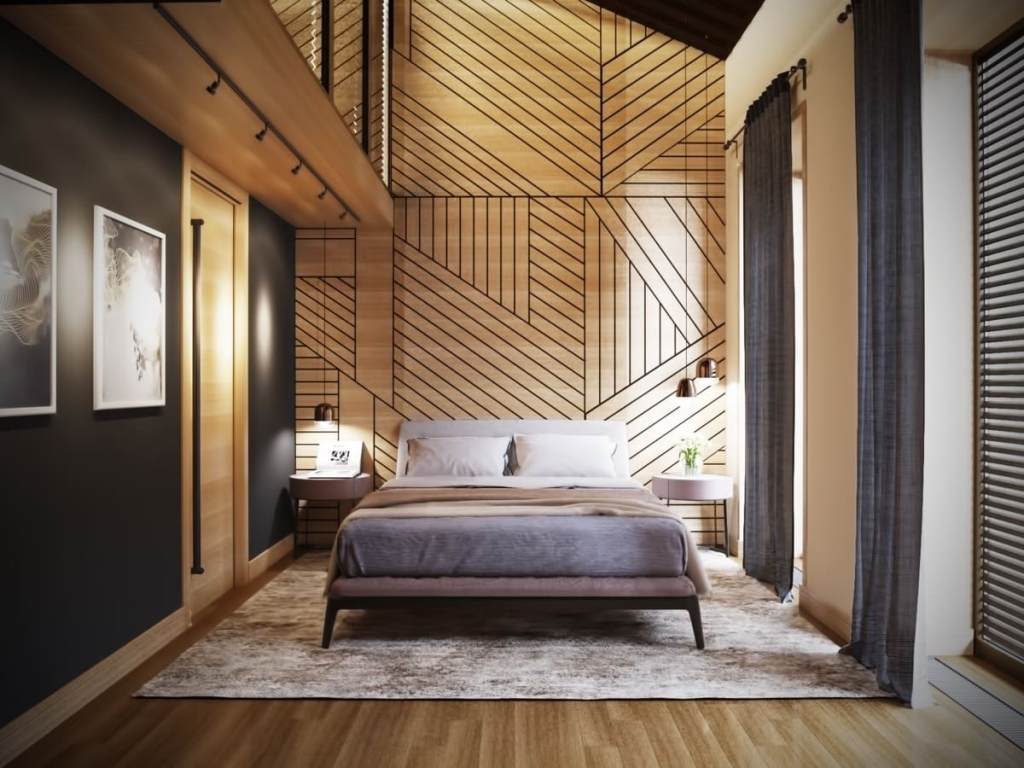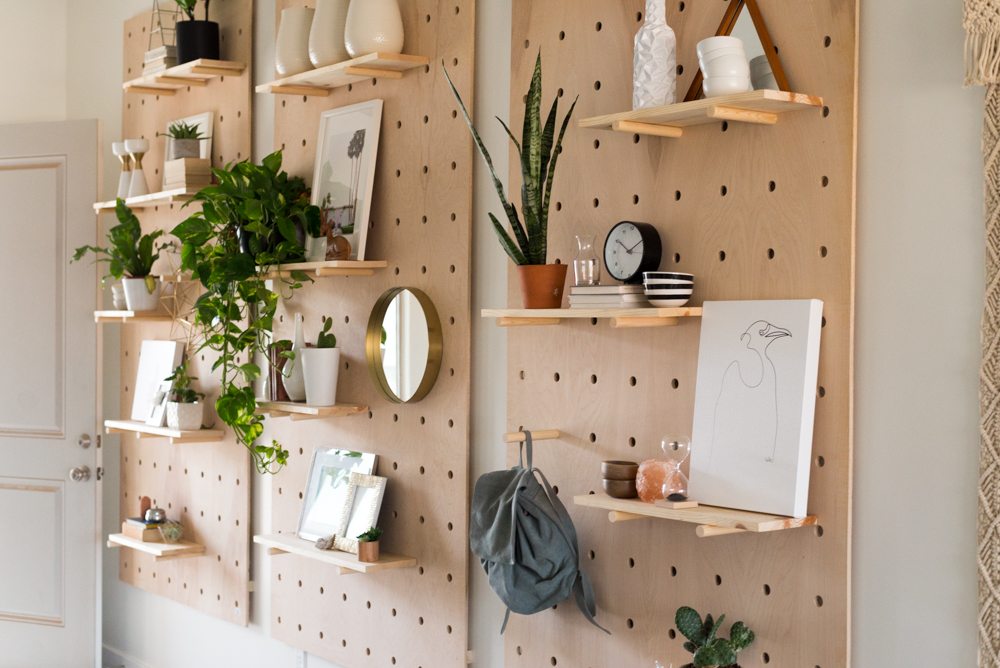
We use makeup on ourselves, to hide blemishes and to look better. Similarly, when you start beautifying your wall, you went to create a decorative background. When you decorate a wall, you select a plain surface without any wires, openings or defects.
As the word suggests, one will panel a wall surface to cover the blemishes. Wall paneling is a covering element for walls that we choose for better aesthetics or decoration. Wall panelling can be functional or serving technical services.
Nowadays, using wall panelling, wallpapers or painting a texture on the wall is trending. Wall panelling is better than painting or wallpapering the wall as it provides better durability and hygiene. One can also hide the speakers or electrical cables behind the panelling that kills the show of your room, while it is not feasible with wallpapers and painting.
Wall panelling for a home is majorly for a better décor. Designers can create a different ambiance and feel of space by playing with wall surfaces. They can easily break up the monotonous wall surface to create inspiring feeling in a room.

Wall Panel
There are two systems of panelling. One is a simple way to screw the panels or boards on the wall. This system is applicable for a straight wall surface or lightweight panels.
The other system is widely in use, where the systems have a grid of frame. The grid size can vary according to the sizes and patterns of the panels. The material of the frame can be of metal or wood depending on the material and weight of the panels.
The grid system is more effective as it helps to rectify a deflecting wall. Moreover, it provides a uniform plane to the panels. After the grid is ready, one can easily screw or hang the panels on the grid. One can add insulation material like Rock wool in between the cavity for insulating the room.

Panel System with Aluminium Frames
The fixing method for every panel varies depending on the factors like the height of the wall, the deflect in the wall, type of the material, type of panelling, available frame materials, etc.
Types of Wall Panelling According to the Surface Finishes
Here are a few types of Wall panelling available according to the surface finishes they offer:
01. Decorative Wall Panelling
Panelling done to improvise the aesthetics of room are decorative wall panelling. Well, some may also use these to protect the wall surfaces from the damage. These decorative elements are available in different materials and sizes.
Wainscoting is a traditional way to panel the wall by wood. Generally, it covers the lower half of the wall where abrasion of the wall occurs or damage occurs due to non-existent of damp-proof courses. Efflorescence on wall is one of the most trribly damage occurs due to non-existent of damp-proof courses. Know the various tips to remove white salty powder from the wall.
A designer can derive obviously many versions of panelling. There are other materials available for panelling a wall surface like gypsum board, pre-fabricated boards, metals, PVC sheets, fabric, laminate, etc.
It is preferably applicable in residential areas, commercial, institutional, religious, industrial, etc.

Decorative Panel
02. Tile Board Panelling
Tile board is MDF board (medium density fiberboard) with a layer of melamine on top, which looks like an ordinary ceramic tile. These have grooves to mimic the tile joint
These are much easier and quicker to install, as there is no civil work involved. So, conceptually, smaller the size of the panel, more will be the numbers of the frame and hence it will be more cumbersome. Therefore, this system is beneficial to fix the larger size of panels.
It is preferably applicable in the kitchens, toilets, bathtubs, pantry, cafe, etc.

Tile Board
Also read differences between the Solid Wood vs Plywood vs Blockboard vs HDF vs MDF
03. Utility Paneling
In the utility panel, one uses the panels to hang or hold things.
The panels are perforated hardboard that has rows of small holes to hold nails and pegs. One can use the entire surface as a utility panel or just a part of the wall as a utility panel.
They are available in variable colour finishes and wood texture finishes. Any carpenter can modify the panel design as per our requirement.
It is preferably applicable in the kitchens, garages, commercial, etc.

Peg Board
04. Acoustics Paneling
The raw surface of the wall can reflect sound back and may create an echo in a room. To improve the acoustical properties of a room, one needs a sound absorbing surface on the walls of a room. Acoustical panels do the job by absorbing the noise and thus provides a proper sound effect in the room. The acoustics panelling helps in controlling the noise levels in space and avoids the noise transfer through the wall. Nevertheless, the acoustics of a room depends upon the size of panelling, the location of panelling, size of the room, the location of speakers, etc.
These are available in different materials like fabric, foam sheets, perforated board panels, etc. These are very common and available in varied colour shades and textures.
It is preferably applicable in the home theaters, classrooms, cinema theaters, schools, auditoriums, etc.

Fabric Panel
05. External Paneling
Generally, we have different covering panels for external wall surfaces, which are exterior panels. The exteriors panels are of varied materials like pre-cast concrete, wood, bricks, tiles, PVC, cement fiber boards, etc. They aim to protect the wall surfaces from the harsh atmospheric effect.
Within the system, there are Structural panels, which replaces the wall and the exterior panel. The system compiles of sheets of rigid foam insulation sandwiched between layers of fiberboard or other exterior material. These are useful in creating temporary structures or in industries.

Exterior Pre-Cast Concrete Panels
Pros of Wall Paneling
- It gives an opportunity to create an elegant interior for space. There are many options available to create a plain, textured or a 3D wall surface.
- Since we add a layer to the wall surface, the cavity helps to insulate the room thermally and acoustically.
- It also offers to hide the flaws of the wall surface.
- It helps to hide the unpleasant wires or cables running on the wall surfaces. It can conceal such wires and speaker units too.
- The panels are replaceable, so it becomes easy to change the decor or maintain the services hidden behind the panelling.
Cons of Wall Paneling
- Depending on the materials and designs, there should be open joints or holes in panelling, or it can be a home for insects.
- Panelling is the final finish one is going to see, so good workmanship is a must or else the panelled surface can deflect, crack or breakdown.
It is very tempting to panel a wall when panelling offers such great opportunities. My client had a badly painted wall which every year got in the same condition. Thank god, to the concept of wall panelling. It has not only covered the blemishes of the wall but also has become a design element for the room.
I am sure you might have such a wall at your home or workplace that demands a panel. Share me your problems and I can suggest you some panelling ideas.
Also Read:
The Rise of “Modular Bathroom” for your Modern Home!
Mood Board for Interior Design | A complete Guide
Creative & Spacious Kitchen Corner Ideas
10 Simple Steps for Setting Up Your Meditation Room!
Image Courtesy: Image 1, Image 2, Image 3, Image 5, Image 6, Image 7
Author Bio
Urnit Kaur – Urnit Kaur is an Architect based in Ahmedabad. She loves Design challenges and it helps her client’s to bring their thoughts into reality. She has been passionately involved in Architecture from designing projects to managing them on site since 2014. She has been part of Ahmedabad Heritage Dossier project, designing ISRO Bopal campus and currently working on other varied scale projects with Aakruti Architects. With her rich experience in fieldwork, she shares tips and facts in her blogs about Architecture, Interior and MEP services. She believes learning should never stop, so she has developed a hobby of creating colorful home décor items by experimenting different materials and aesthetics.






























